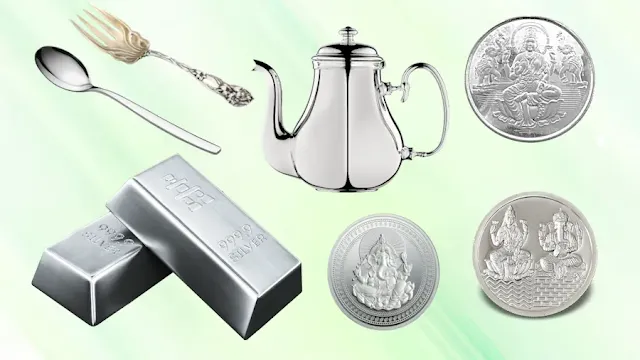Table of Contents
- Overview of Wheelchair Assistance in India
- Is Wheelchair Assistance at Airports Free in India?
- Are We Allowed to Carry a Wheelchair on a Flight?
- What Are the New Rules for Airports in India?
- Do You Have to Pay Extra to Take a Wheelchair on a Plane?
- Addressing Misuse of Wheelchair Services
- Tips for Requesting Wheelchair Assistance
- Frequently Asked Questions
Overview of Wheelchair Assistance in India
The surge in wheelchair requests at India’s major airports, particularly on international routes, has become a significant issue. Airlines like Air India report handling over 100,000 wheelchair bookings monthly, driven by both genuine needs and misuse by some passengers to skip long queues or avoid lengthy walks. This can deprive those with genuine mobility issues, such as the elderly or those with disabilities, of timely assistance. Indian airports and airlines are working to ensure accessibility while addressing these challenges. For more details, visit the Delhi Airport special assistance page.
[](https://www.cnbctv18.com/business/aviation/air-india-us-uk-flights-passengers-wheelchair-assistance-requests-misuse-dgca-rules-19581050.htm)Is Wheelchair Assistance at Airports Free in India?
Yes, wheelchair assistance at Indian airports is provided free of charge to passengers with disabilities, elderly travelers, or those with reduced mobility, as mandated by passenger civil rights and the Directorate General of Civil Aviation (DGCA) guidelines. Airlines like IndiGo and Air India offer this service from check-in to boarding and upon arrival, subject to availability. Passengers are encouraged to request assistance at least 48 hours in advance to ensure availability. Some airports, like Mumbai, offer additional chargeable services like Airport Kruz for motorized wheelchairs.
[](https://csmia.adaniairports.com/special-assistance-facility.aspx)[](https://www.ixigo.com/airlines/air_india-ai/special-assistance-icms)Are We Allowed to Carry a Wheelchair on a Flight?
Passengers can carry their own wheelchairs on flights to and from India, typically free of charge as part of the baggage allowance. Airlines like Air India and IndiGo allow manual wheelchairs to be checked into the hold or, if collapsible and space permits, stored in the cabin. Battery-powered wheelchairs with non-spillable or lithium batteries are permitted but must comply with IATA Dangerous Goods Regulations. Passengers must inform the airline at least 48 hours in advance, specifying battery details. Wheelchairs are often collected at the aircraft door and returned at the gate or baggage claim.
[](https://flybackindia.com/blog/air-indias-wheelchair-assistance/)[](https://www.airindia.com/in/en/travel-information/health-medical-assistance/medical-needs-clearance.html)What Are the New Rules for Airports in India?
The DGCA is reviewing wheelchair assistance protocols due to high demand and misuse concerns. Following incidents like a passenger’s death at Mumbai Airport due to a wheelchair shortage, airlines and airports are urged to improve coordination. New guidelines may include stricter verification for wheelchair requests to prioritize those with genuine needs. Passengers must pre-book assistance 48 hours in advance, and airlines categorize needs using codes like WCHR (ramp assistance), WCHS (steps assistance), or WCHC (fully immobile). Delhi Airport offers free buggy services and reserved drop-off lanes for accessibility.
[](https://www.newdelhiairport.in/blog/caring-for-all-making-travel-effortless-for-flyers-with-special-needs-at-del)[](https://timesofindia.indiatimes.com/india/airport-trek-wheelchair-lag-hits-airlines-as-airport-walk-area-increases/articleshow/108912595.cms)Do You Have to Pay Extra to Take a Wheelchair on a Plane?
No, carrying a wheelchair on a plane in India is generally free, as it is considered a mobility aid and included in the baggage allowance. Airlines like Air India and IndiGo do not charge for transporting manual or approved battery-powered wheelchairs. However, for mobility aids over 30 kg, special permission is required due to weight restrictions. Some airports may charge for premium services, like motorized wheelchairs at Delhi’s T3. Always confirm with the airline or check the Mumbai Airport website for specific charges.
[](https://www.airindia.com/in/en/travel-information/health-medical-assistance/medical-needs-clearance.html)[](https://www.ixigo.com/airlines/air_india-ai/special-assistance-icms)Addressing Misuse of Wheelchair Services
The misuse of wheelchair services, particularly on international routes, has strained resources. Reports indicate that up to 30% of passengers on flights like Delhi-Newark request wheelchairs, with some using them to bypass queues rather than for medical needs. This can delay assistance for those who genuinely require it. The DGCA is considering guidelines to verify requests, and airlines may limit the number of wheelchair passengers per flight for safety during emergencies. Passengers are urged to reserve this service for those with genuine mobility issues.
[](https://www.cnbctv18.com/business/aviation/air-india-us-uk-flights-passengers-wheelchair-assistance-requests-misuse-dgca-rules-19581050.htm)Tips for Requesting Wheelchair Assistance
To ensure a smooth experience, follow these tips:
- Request Early: Notify your airline at booking or at least 48 hours before departure via their website or customer service, such as Air India’s contact page.
- Arrive Early: Reach the airport 2-3 hours before departure to allow time for check-in, security, and assistance.
- Specify Needs: Clearly state if you need assistance to the gate, aircraft door, or seat, and whether you’re using your own wheelchair.
- Carry Documentation: Have medical certificates or battery details for powered wheelchairs ready, if applicable.
- Provide Feedback: Share your experience with airlines to help improve services.
For more travel tips, check resources like WeCapable for disability travel guidance.
[](https://whill.inc/us/blog/how-to-get-wheelchair-assistance-at-airports)Frequently Asked Questions
Is wheelchair assistance at airports free in India?
Yes, wheelchair assistance is free at Indian airports for passengers with disabilities or reduced mobility, as per DGCA guidelines. Request it 48 hours in advance to ensure availability.
Are we allowed to carry a wheelchair on a flight?
Yes, passengers can carry manual or approved battery-powered wheelchairs free of charge, either in the hold or cabin (if space allows). Notify the airline 48 hours in advance.
What are the new rules for airports in India?
The DGCA is reviewing wheelchair protocols, emphasizing pre-booking 48 hours in advance and potential verification to curb misuse, ensuring priority for those with genuine needs.
Do you have to pay extra to take a wheelchair on a plane?
No, wheelchairs are carried free as part of the baggage allowance. However, premium services like motorized wheelchairs at some airports may incur charges.










